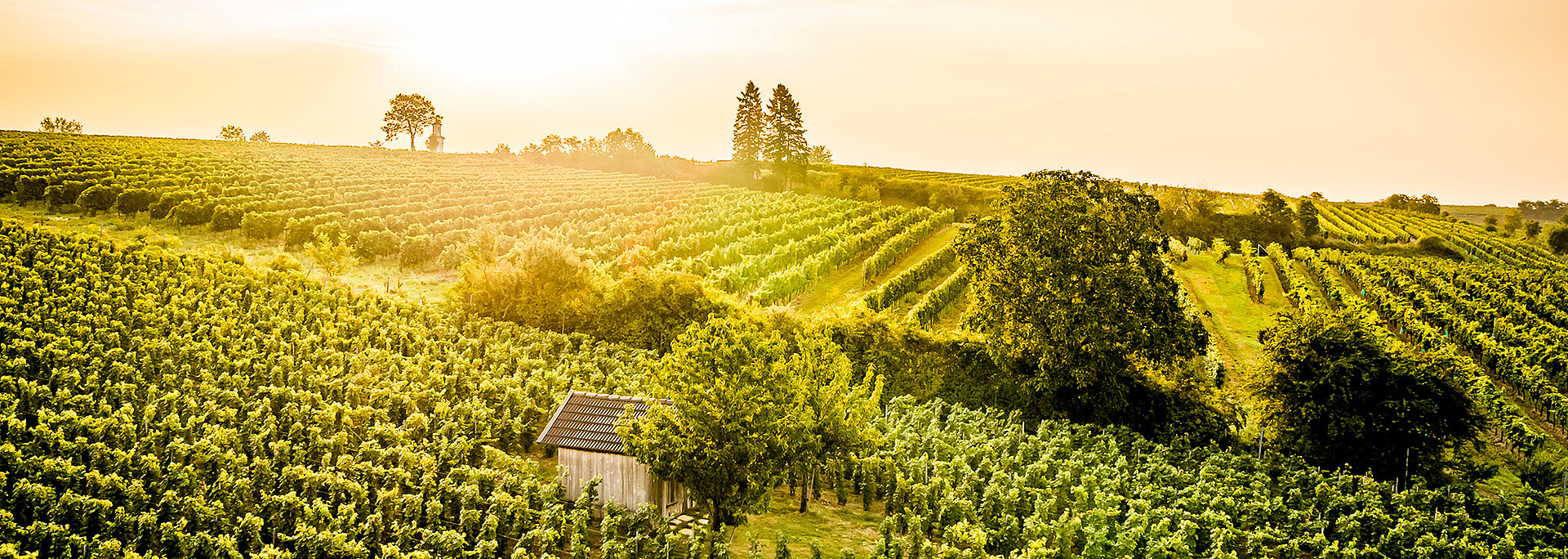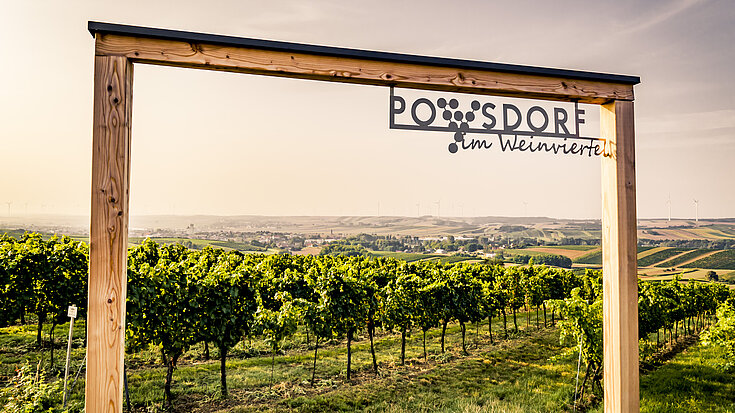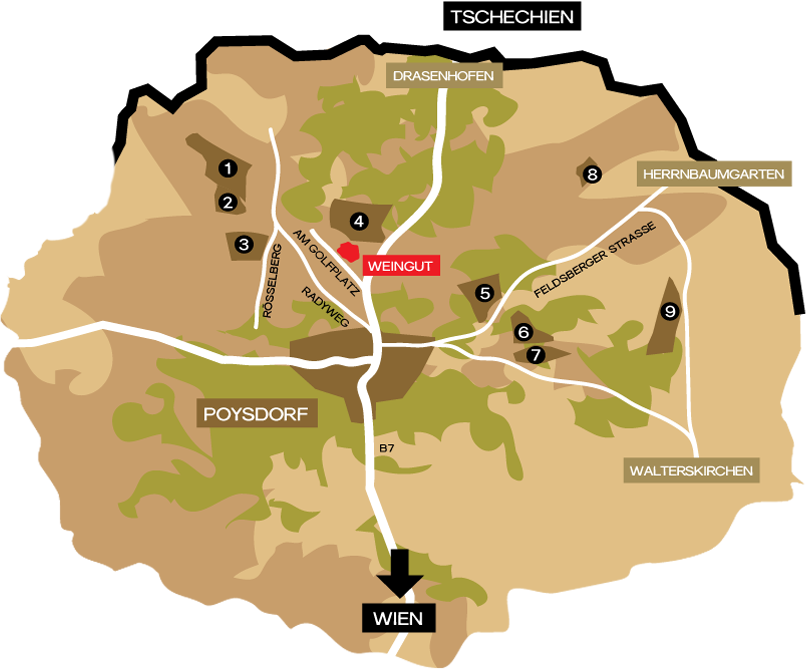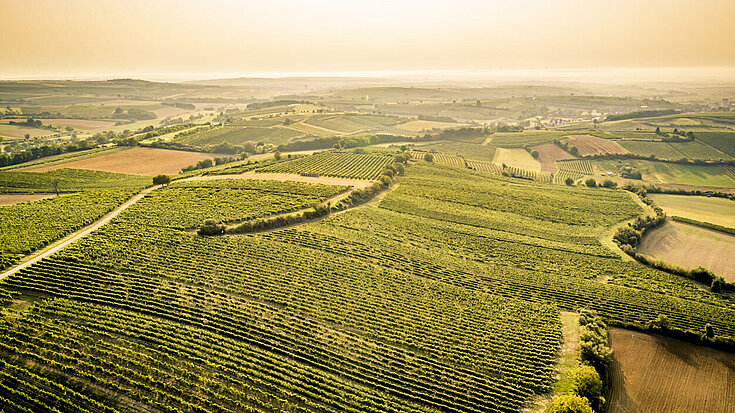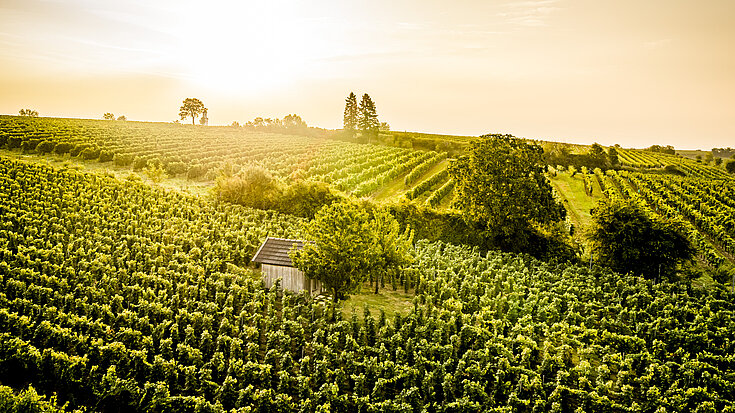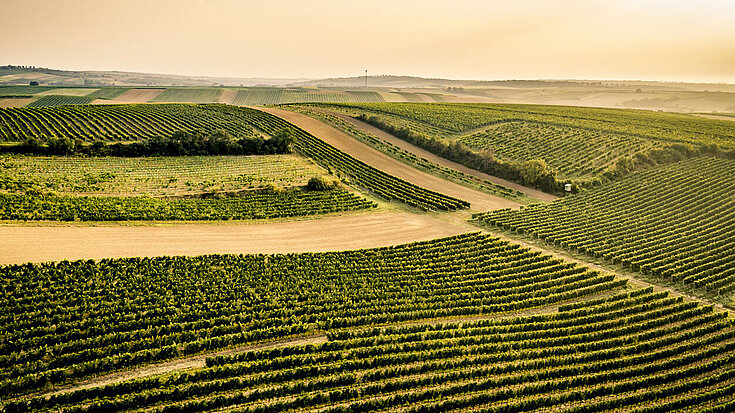Poysdorfer Terroir
The Neustifters' vineyards are located around Poysdorf, in the north-eastern part of the Weinviertel.
The foothills of the Staatz limestone cliffs offer the best conditions for fruity, mineral wines. Loamy sand and gravelly loess soils guarantee independent grapes with fresh aromas. The Pannonian climate ensures hot summers and cool September nights. Expressive red wine varieties in particular thrive in the kettle vineyards in the north of Poysdorf and are evidence of the great red wine tradition in the Weinviertel.
Vinophile treasures
The individual generations of winegrowers at the Neustifter winery have one thing in common: a penchant for the best sites. Since the winery has been founded the Neustifters have invested in vineyards in first-class sites including Maxendorf, Saurüsseln and Hermannschachern, the oldest vineyard in Poysdorf which has been in existence since 1338. In the Steinberg vineyard a very special Veltliner grows as a stock culture. The main variety is Grüner Veltliner, which is cultivated in eight different varieties. In addition to a diverse range of white wines, frizzante, sparkling wine and Rosé, the family winery has a great passion for red wines: especially Zweigelt, Pinot Noir, Cabernet Sauvignon and Blaufränkisch.
Lausenpölz (2)
Planted varieties: Riesling
Soil: sandy gravely soil
In former times it was a hunting ground. The name originates from the hunters lurking for wild animals. Today our elegant and fruity Riesling grows there.
Rösselberg (3)
Planted varieties: Sauvignon blanc
Soil: profound loess soil, good water storage capacity
This former horse pasture gives ideal conditions for aromatic wines. Our Sauvignon blanc feels very comfortable there and grows well.
Steigler (5)
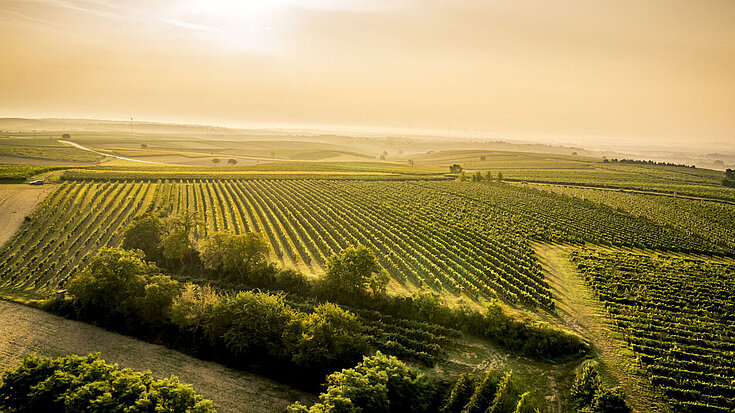
Planted varieties: Grüner Veltliner, Gelber Muskateller
Soil: humous loess soil
The vineyards here create very fresh and fruity wines like Grüner Veltliner or Gelber Muskateller.
Maxendorf (6)
Planted varieties: Zweigelt, Cabernet Sauvignon
Soil: profound clay soil with black cotton soil
Maxendorf is a sunken town and belongs to Ketzelsdorf. Small streams run through this valley – best conditions for Zweigelt and Cabernet Sauvignon.
Saurüsseln (7)
Planted varietes: Grüner Veltliner, Zweigelt, Blauer Portugieser
Soil: loamy sandy loess soil, basin-shaped with south-east expansion
Hundreds of years ago this was a pasture for pigs. This is the origin of the name Saurüsseln (pig’s snout). The name also became a popular brand which stands for fresh and fruity Grüner Veltliner. We also plant a spicy and mineral Zweigelt there.
